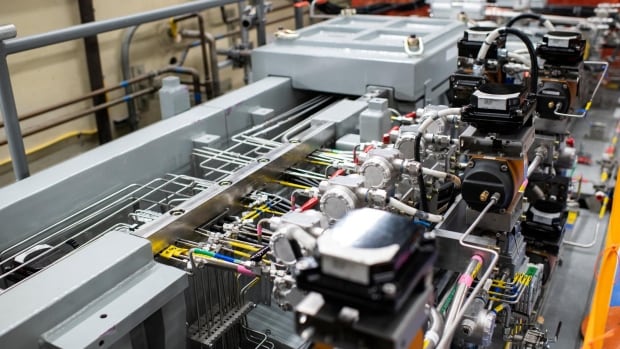A team of McMaster University students in Hamilton will soon head to Iceland, where they’ll camp out by a series of underground lava tubes they plan to map with a drone.
The drone uses hardware and software designed by the undergraduate students, who hope their tech will one day be used in space exploration to specially map underground areas in space.
There are about 25 student members of the McMaster Deep-space Analogue Research Expedition (DARE) team. After a year of planning, five of them will go to Iceland for about two weeks in August.
“Being the first people to actually create a digital map of these specific caves, that’s gonna be really exciting,” said Daniel Young, one of the students taking the trip.
Michael Holder, the club’s president, said McMaster DARE is based on building and testing solutions to aerospace-related problems, and mapping underground spaces is one of them.
“If there’s a piece of sensitive equipment or a group of astronauts on another planet entering a subterranean cave or any kind of crevice, they don’t really know much because there’s no easy way to see in,” said Holder, an engineering physics student.
Michael Holder, a McMaster University student and president of the Deep-space Analogue Research Expedition team, demonstrates the drone he and his colleagues will use to map tunnels in Iceland.
The team’s solution, called Canary, would be able to fly in and send back data on the spaces in question, through the use of sensors. WIth LiDAR (light detection and ranging), which measures distances, Canary can also map areas.
“If we can create a system that can go in before [explorers] and tell them areas of interest and potential hazards, then they have a better idea of what’s in there,” Holder told CBC Hamilton, alongside the team’s co-vice-presidents, Young and Harry Wu.
“You can think of it a little bit like the old adage ‘canary in a coal mine.’ That’s why it’s called Canary,” Holder said. “Send it in beforehand, and it gives them a warning and an idea of what’s going on.”
‘A lot of iteration … a lot of learning’
Holder, Wu, Young and the two other McMaster DARE members will test Canary in Iceland because the lava tubes there are geographically similar to caves on the moon or Mars.

Iceland’s geography has made it a popular site for analog missions, which refer to experiments in environments similar to those in outer space.
The lava tubes that DARE is going to are unnamed, but close to a big tube called Surtshellir, which is a two-hour trip from Reykjavik, Holder said.
Canary consists of a store-bought quadcopter drone and custom plastic chassis on which the electrical components attach.
Wu, DARE’s electrical lead, showed previous versions of the circuit board the system will use, each smaller and more streamlined than the last.
“It’s a lot of iteration. It’s a lot of learning,” Wu said.
McMaster Deep-space Analogue Research Expedition team vice president Daniel Young shows how their Canary drone will use LiDAR to map spaces.
Software lead Young showed off the LiDAR component using his laptop, demonstrating how the sensor tracks where objects are in relation to it and plots those on a map.
“We can kind of trace the path the drone takes and then draw the map that it sees,” the mechatronics student said.
Drone tested 1st at Hamilton’s Rattlesnake Point
The DARE group launched under a different name in 2021. The official McMaster student club has a membership that includes students from a range of disciplines, such as software engineering and bio-tech, Holder said.
In addition to testing Canary, the expedition will include at least one side project involving testing soil samples.
To simulate an exploratory mission, the team will camp by the caves in Iceland. They partnered with a Canadian wilderness first-aid business for training and have partners in Iceland who will be able to assist if needed.
The lava tubes they’ll map have only been mapped by hand, Holder said.

Though the tubes are nearly 5½ metres (18 feet) high in some places, Holder said he’ll fly very carefully so as not to crash the drone, moving in deliberate parallel rows as if he were mowing a lawn.
He noted the team already tested flying in the much narrower caves at Hamilton’s Rattlesnake Point.
“There are a couple of scratches from when we got close to walls before, so that was fun, but nothing major happened.”
Holder, Wu and Young say they’re well prepared for the expedition with multiple redundancies. When asked what they’re most nervous about, all mentioned the remote possibility of catastrophic failure.
“[If] the part that I made doesn’t work, man, that would kill me,” Wu said. “We have spares, but just the thought of all of them having some fundamental design error that we overlooked and only comes up then is a terrifying thought to me.”
Overall, Holder said, excitement is the prevailing mood.
“Being able to be in control of all of our safety systems, our backup plans and seeing it all come together … is going to be great.”









